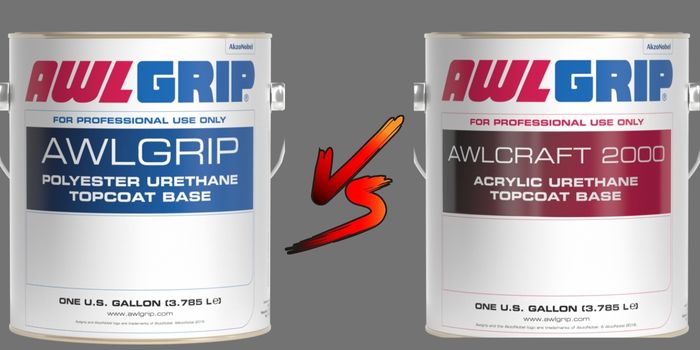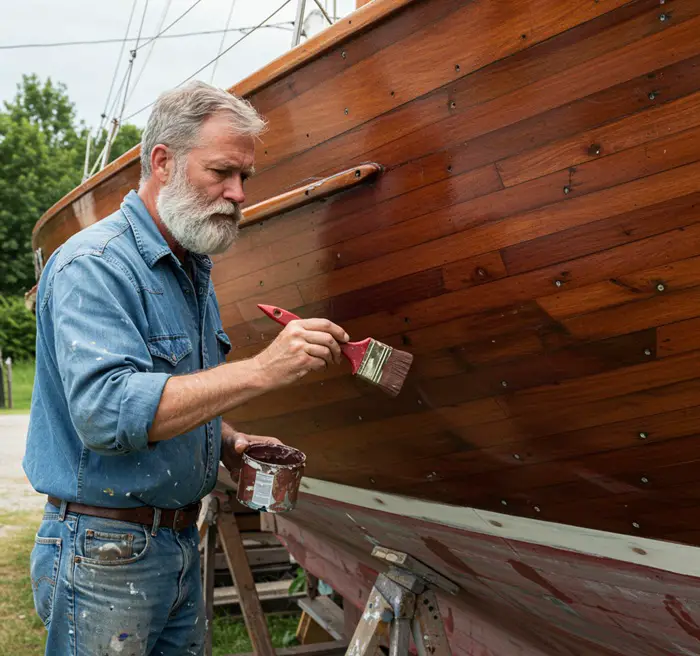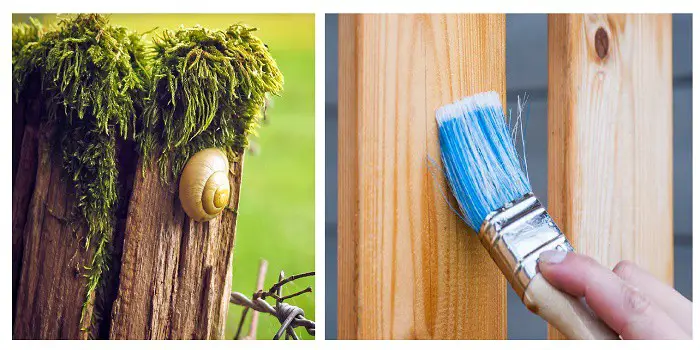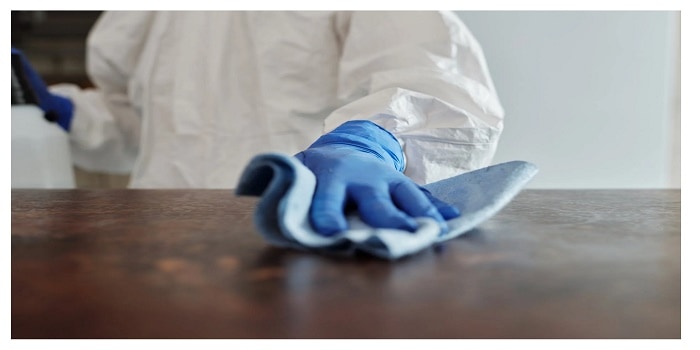
Finding the right urethane topcoat for your boat may spell the difference between proper protection and vulnerability to the elements.
Awlgrip and Awlcraft 2000 both have strong reputations for providing ample protection.
Among the two most popular Awlgrip and Awlcraft 2000 products for boats and other fiberglass surfaces, which one is right for you will depend on several factors and information.
It starts by comparing each product, identifying the advantages and issues, and then determining which one is best suited for your needs.
What is Awlgrip?
Awlgrip is a topcoat that is based on a polyester urethane resin. This is important because polyester molecules are considerably smaller compared to acrylic molecules.
The result is that Awlgrip is dense, durable, and quite tough against the elements.
This translates not only into waterproofing but also protection against scrapes and abrasions, which are common with boats.
Plus, the chemical resistance of Awlgrip is quite considerable. This is just one of several reasons why Awlgrip is quite popular as a topcoat for boats.
What is Awlcraft 2000?
Awlcraft 2000 is a topcoat based on acrylic molecules. As mentioned, acrylic molecules are not as small as polyester ones.
This means that in terms of protection from the elements, abrasions, chemicals, and overall durability, Awlcraft 2000 is not as strong compared to Awlgrip.
However, Awlcraft 2000 still has its merits. It is easier to apply compared to Awlgrip and allows for faster drying.
The reason is that the number of molecules is less, so the lack of density makes it easier and faster to dry out than polyester molecules.
But another advantage is that less dust gets trapped in the finish, making smoother, cleaner results.
Comparing Awlgrip vs. Awlcraft 2000
Both Awlgrip and Awlcraft 2000 provide resistance to staining, long-lasting glossy coats, and other similar advantages. But which one is best suited to your boat?
Abrasion Resistance
The denser molecular structure makes Awlgrip a superior product compared to Awlcraft 2000.
Remember that the abrasive forces are not only from solid objects, such as boat docks, for example. But the water itself can be abrasive when running your boat at higher speeds.
Application
Because Awlcraft 2000 can be sprayed on, it is much easier and faster to apply compared to Awlgrip, which normally requires a brush or roller.
Although to be fair, there are versions of Awlgrip that can be sprayed on as well.
However, Awlcraft 2000 dries considerably faster, which makes it overall easier to apply and set compared to Awlgrip.
Buffing
Awlcraft 2000 offers a softer finish because of the lack of density in its molecular structure compared to Awlgrip.
This means that the product has a lower melting point. During the buffing process, the resin that makes up Awlcraft 2000 can flow together without having to cut the surface as deeply as Awlgrip.
This means that for buffing purposes, Awlcraft 2000 is the superior product.
In addition, a fairing compound is required when using Awlgrip, so the advantages in terms of buffing are heightened when using Awlcraft 2000.
UV Resistance
Both products offer a strong protective layer that is well-suited to resist UV or ultraviolet rays.
UV rays are what damage materials such as the exterior of your boat, causing the surface to fall apart over time. Because the molecule density is stronger with Awlgrip, it is better suited to resist UV rays.

Awlgrip or Awlcraft 2000: Which One to Choose?
This will depend on how much you want to spend in terms of time, money, and effort.
While Awlgrip is generally superior for boats, it does take longer to apply and for the substance to dry. If that is not a factor, then Awlgrip is the best choice.
Awlcraft 2000 is a better coating if you are pressed for time or want a topcoat that is easy to apply and quick to dry.
I think, if you only take your boat out occasionally and you store it in a protected place, then Awlcraft 2000 is probably the better choice.
Why Are Polyurethane Coatings Better Than Gel Coats?
But before you decide which product is right for your needs, it pays to understand the movement toward urethane or polyurethane coats.
For many years, gel coats were applied as the finish for boats. However, polyurethane coats have become quite popular and even surpass gel coats in many ways.
Polyurethane provides greater durability and a prominent shine and is easy to apply.
So popular have the polyurethane finishes become that many boat owners no longer paint their prized possessions; they simply apply a new topcoat.
Another factor that helps is that polyurethane-based products do not require regular buffing, waxing, and buffing again to keep the boat looking sharp and in like-new condition.
Plus, such topcoats come with additional elements that include UV protection, prevention of buildup from grime, grease, and dirt, and other attributes.
Over time, gel coats can become more porous, which means you must add more Gelcoat regularly to keep the seal in place. While polyurethane is tighter and stronger, meaning you will not have to apply new coats as often.
Share the post "Awlgrip vs. Awlcraft 2000 – What’s Better for My Boat?"

Hi, I am Mark Garner a professional carpenter, woodworker, and DIY painter. I live in the small city of Peoria, Arizona as a semi-retired woodworker. I have started this blog with a simple motive to help you with my wood experience in this sector. If you like to know more about what I love doing and how it all got started, you can check more about me here.




